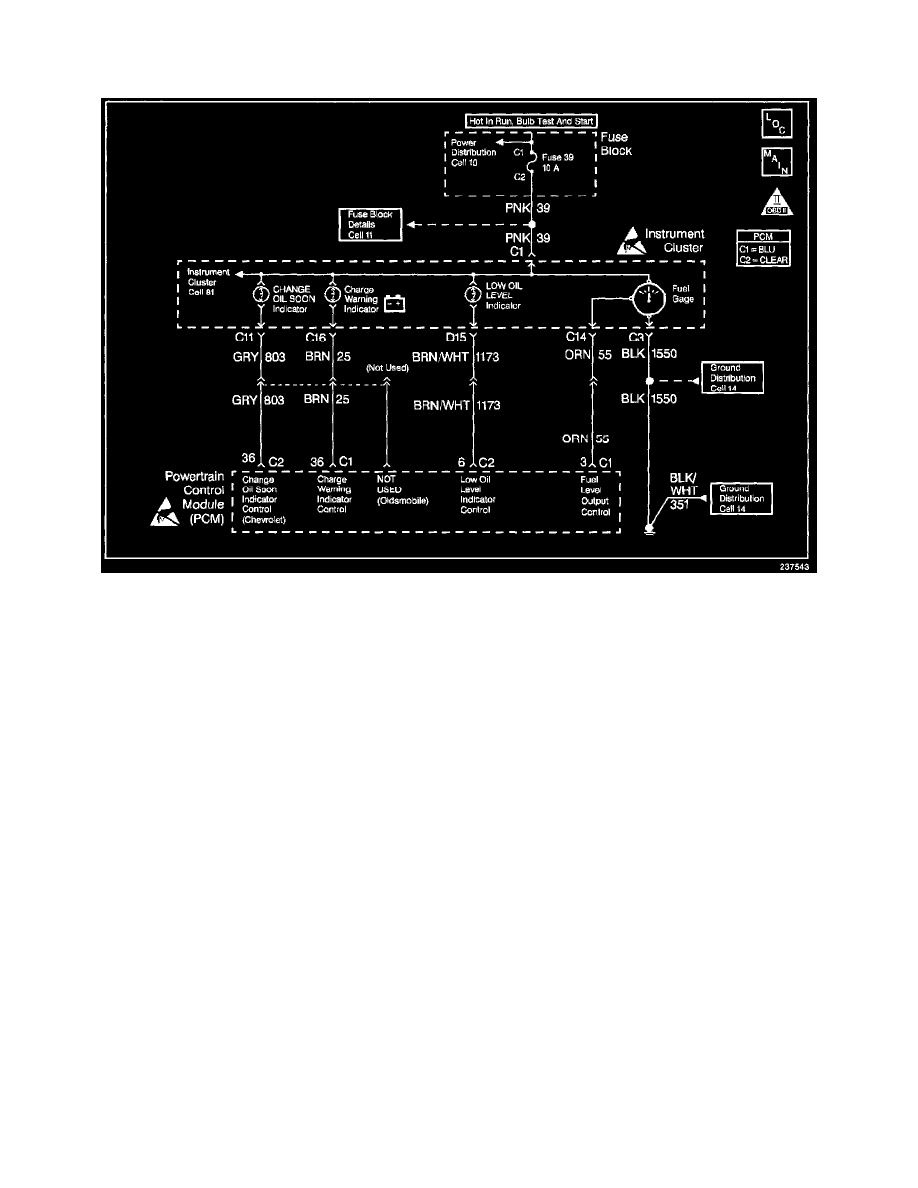Lumina V6-3.8L VIN K (1998)

Voltage Signal: Description and Operation
PCM Controlled Warning Lamps
Wiring Diagram
MIL OPERATION
The PCM controlled lamps are intended to alert the driver to an operating condition which may require immediate attention. Ignition positive voltage
powers the PCM controlled lamps. The PCM commands the lamps ON by applying ground to the lamp control circuit.
The Malfunction Indicator Lamp (MIL) is located on the instrument panel (CHECK ENGINE) or (SERVICE ENGINE SOON). The MIL performs
the following functions:
^
It informs the driver that a problem has occurred and that the vehicle should be taken for service as soon as possible.
^
As a bulb check and system check, the MIL will illuminate with the ignition switch ON and the engine not running. When the engine is started,
the MIL will turn OFF. If the MIL remains ON, the self-diagnostic system has detected a problem. If the problem goes away, the MIL will turn
OFF in most cases, but a diagnostic trouble code will remain stored.
^
If the MIL is illuminated, then the engine stalls, the MIL will remain Illuminated so long as the ignition switch is ON.
^
Now, if the MIL is not illuminated and the engine stalls, the MIL will not illuminate until the ignition switch is cycled OFF, then ON.
Perform the Powertrain On-Board Diagnostic System Check first, when the following conditions are present:
^
When the MIL does not turn ON when the the ignition switch is turned to the RUN position
^
When the MIL remains ON while the engine is running
^
When you suspect a driveability problem
^
When you suspect an emissions problem
Powertrain On-Board Diagnostic System Check. See: Testing and Inspection
LOW OIL LEVEL LAMP
The PCM commands the Low Oil Level Lamp ON if the engine oil level switch indicates that a low oil level condition exists. The PCM determines
whether or not to test for low oil level based on the difference between engine coolant temperature at the last shutdown and engine coolant
temperature at start-up. This is to ensure that the oil has drained back into the oil pan before testing.
The engine oil level switch is a simple float switch that is grounded when the engine oil level is OK. When the ignition is first turned ON, the PCM
commands the Low Oil Level lamp ON for a brief period of time to test the bulb (approximately 3 seconds). The PCM also checks the engine oil level
switch circuit at start-up. If the engine has been running, the PCM performs a test routine based on engine coolant temperature to ensure that the
engine oil drained back into the sump before checking the state of the engine oil level switch. If the engine coolant temperature is between 15°C (59°
F) and 130°C (266°F), the PCM compares the engine coolant temperature at the last key OFF to the engine coolant temperature at the current key ON.
If the difference between the recorded temperature values is at least 12°C (54°F), the PCM will test the engine oil level.
